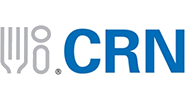CRN’s Supplemental blog is no longer taking submissions, but the association is offering new vehicles to share your thoughts on topics relevant to the dietary supplement industry. See our Q&As and Take 5 videos and contact Comms@crnusa.org with your ideas.
DECEMBER 14, 2022 | Join the conversation on LinkedIn and Twitter
By Matthew Lippman, HUB International
Like many other industries, businesses across the life sciences industry are struggling to find capable employees. While employers can do little for the overall labor shortage, they can improve their own recruiting and retention through personalized benefits based on data analytics. Many businesses are turning to employee benefits as a strategic incentive to attract and retain talent. For example, a study by Biospace identified catered lunch, vacation accrual, unlimited PTO, and additional 401K contributions as the top four benefits within the life sciences industry that employers should consider offering.
However, for employers across all industries, rising healthcare costs have unfortunately been a common trend during employee benefit plan renewals this year. This has largely been a result of several factors since the start of the pandemic and beyond.
- For example, while all COVID-related claims (vaccines, hospital stays, etc.) have been mostly free for members, the insurance carriers are still paying for them, and in turn, increasing their premiums to offset the expenses.
- Additionally, various drivers have led to higher carrier costs, such as more people going back to the doctor for their elective surgeries uncovering that some issues may have gotten progressively worse during the past several years.
- With hospitals consolidating and doctors joining larger groups, providers are asking for more money for their services, etc.
According to another recent study, larger employers, where rates are individually set with carriers, project their health care costs will jump 6% next year compared with an average 5% increase they’re experiencing this year.

In today’s market, life sciences employers must utilize creative solutions to mitigate the rising costs of healthcare while still providing employees with competitive benefits offerings. This includes:
1. Individual Coverage Health Reimbursement Agreements (ICHRA)–An ICHRA enables employers of any size to reimburse their employees tax-free for health insurance premiums and medical expenses. With an ICHRA, employers set an allowance and employees choose the individual state plan that fits their needs.
Advantages include cost-effective renewals (individual plans do not increase much year over year), no minimum participation requirements and employees are provided with a platform to assist them with enrollment.
2. Make Sure Plan Design Is The Best–The need to create an experience that your employees will value, in the workplace and beyond, is a win-win for all. Utilizing HUB’s Persona Analysis tool is a powerful approach to designing and delivering employee benefits. It uses comprehensive understanding of your employees' real priorities to develop a truly customized benefits plan that enhances the quality of the employee-employer experience and helps you stay ahead in the competition for talent.
3. Explore a Professional Employer Organization (PEO)–A PEO helps to manage a company’s HR operations. The PEO handles payroll, provides employee benefits, HR technology and compliance.
For smaller employers, the PEO underwrites the health insurance and, if the demographics are favorable, can save their business significant premium dollars. For companies without a true HR infrastructure and/or employees in various states, the PEO is ideal to assist with state-by-state complexities around mandates and taxes.
4. Voluntary Benefits –Offering voluntary benefits can help manage the labor gap and attract long-term staff. Funded by the employer or not, voluntary benefits have value to workers in this highly competitive labor market. Here are some options to consider:
- Supplemental health—Employees are often stretched to cover out-of-pocket medical costs. Supplemental health coverage pays benefits to members directly for treatments related to injuries, the costs of hospitalization or a covered critical condition.
- Accident insurance—If an employee or the employee’s family member(s) suffer an accident away from the job, accident insurance helps pay for treatment. This coverage can help reduce workers’ compensation claims as the funds enable employees to pay for treatment (rather than delaying it) if they are hurt.
- Legal services benefits—Group legal plans ensure access to professional legal help for everything from traffic tickets and small claims to landlord and immigration issues. They are good for employers on multiple fronts beyond recruitment, helping reduce presenteeism and absenteeism.
- Early wage access—These programs give employees access to earnings that have accrued between paychecks.
It’s also very important for employees to be aware of all their health care options, as those over the age of 65 may find it more affordable to look into Medicare and purchase a supplemental plan instead of taking the coverage provided by the employer.
Most importantly, shop the market. Working with an experienced insurance advisor affords you the opportunity to vet out markets that may not have otherwise been available to you.
 Matthew Lippman currently serves as a Vice President and Life Sciences Practice Leader with HUB International Northeast, a leading full-service insurance brokerage. Matthew holds nearly three decades of experience with providing individuals and businesses with customized, comprehensive insurance and risk management solutions, specializing in the Life Sciences industry, specifically pharmaceutical and nutraceutical companies. He can be reached at 516-396-8211 or matthew.lippman@hubinternational.com.
Matthew Lippman currently serves as a Vice President and Life Sciences Practice Leader with HUB International Northeast, a leading full-service insurance brokerage. Matthew holds nearly three decades of experience with providing individuals and businesses with customized, comprehensive insurance and risk management solutions, specializing in the Life Sciences industry, specifically pharmaceutical and nutraceutical companies. He can be reached at 516-396-8211 or matthew.lippman@hubinternational.com.

